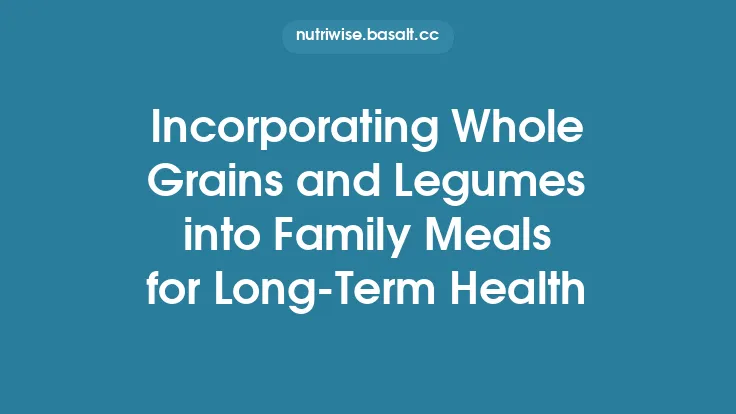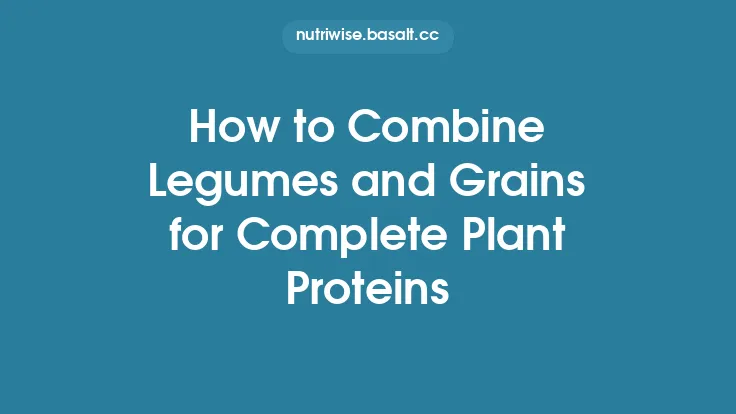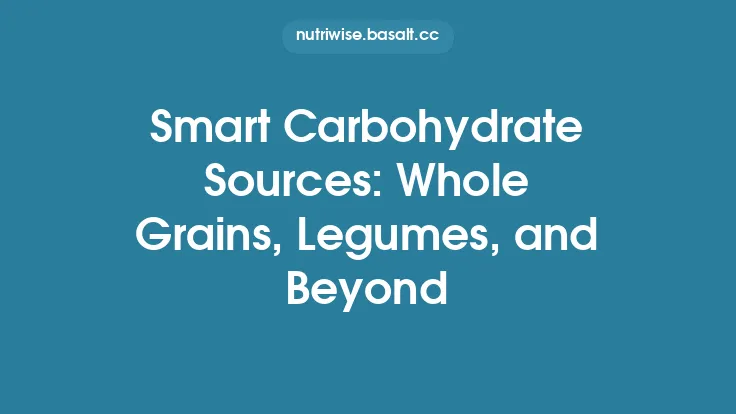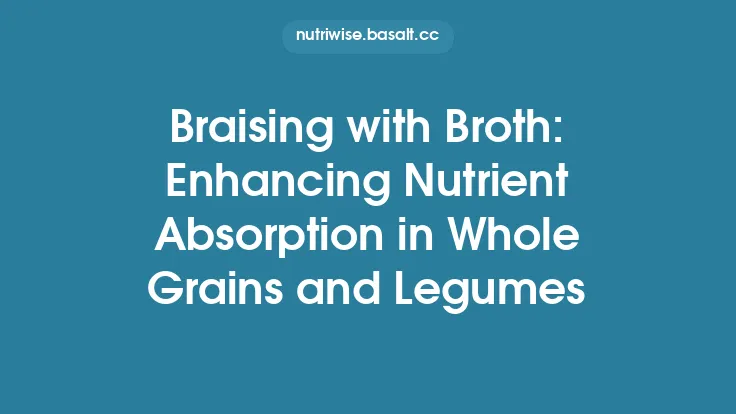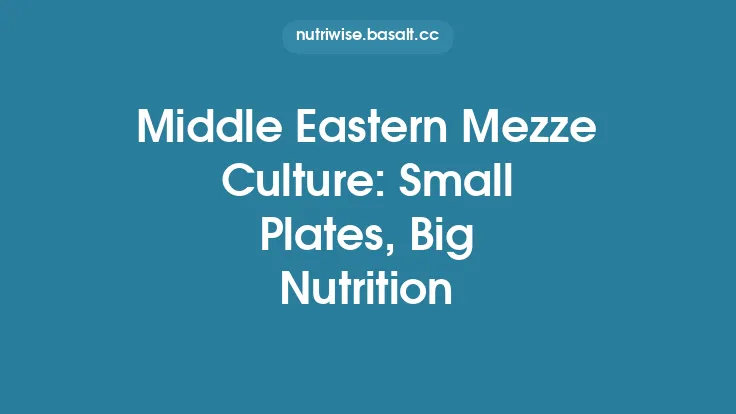The Middle East has long been a crossroads of cultures, trade routes, and agricultural innovation. Its culinary landscape reflects millennia of interaction between peoples and the land, producing a diet that is both richly flavorful and nutritionally robust. Central to this tradition are three pillars: olive oil, a diverse array of legumes, and whole grains. Together they shape daily meals, festive feasts, and the health of generations. This article explores the origins, cultural significance, nutritional science, and contemporary relevance of these foods within the Middle Eastern context.
Historical Roots of Olive Oil in the Middle East
Olive trees (Olea europaea) are native to the Levant, with archaeological evidence of cultivation dating back to the Neolithic period (≈ 10,000 years ago). Early settlements in present‑day Israel, Jordan, and Syria cultivated olives for both oil and fruit, recognizing the oil’s superior smoke point, stability, and flavor profile.
- Cultivation and Harvest: Traditional orchards were often terraced on hillsides, optimizing drainage and sun exposure. Harvesting was a communal activity, with olives hand‑picked or shaken from branches using long poles. The fruit was then crushed in stone mills (known as “moulin à olives”) and pressed in wooden or stone presses to extract the oil.
- Cultural Symbolism: Olive oil appears in religious texts, poetry, and folklore throughout the region. It is used in ritual purification, anointing ceremonies, and as a symbol of peace and prosperity.
- Culinary Integration: From the earliest days, olive oil served as the primary cooking medium, a dressing for salads, a dip for fresh bread, and a base for sauces such as “toum” (garlic‑olive oil emulsion) and “zhug” (spicy herb paste). Its monounsaturated fatty acid (MUFA) composition, particularly oleic acid, contributed to the oil’s resistance to oxidation, making it suitable for both high‑heat cooking and long‑term storage.
Legumes: Staples Across the Region
Legumes have been a cornerstone of Middle Eastern nutrition for thousands of years, providing essential protein, fiber, and micronutrients in a climate where animal protein was historically scarce.
| Legume | Primary Growing Areas | Traditional Uses | Key Nutrients |
|---|---|---|---|
| Chickpeas (Cicer arietinum) | Iran, Turkey, Levant | Hummus, falafel, stews | Protein, folate, iron, magnesium |
| Lentils (Lens culinaris) | Syria, Iraq, Egypt | Mujaddara, soups, salads | B‑vitamins, potassium, zinc |
| Fava beans (Vicia faba) | Egypt, Palestine, Jordan | Ful medames, stews | Vitamin B6, copper, fiber |
| Broad beans (Phaseolus vulgaris) | Lebanon, Saudi Arabia | Salads, pickles | Vitamin C, manganese |
| Split peas (Pisum sativum) | Iran, Iraq | Soups, pilafs | Thiamine, phosphorus |
- Agronomic Adaptations: Legumes thrive in the semi‑arid soils of the region due to their nitrogen‑fixing ability, which enriches the soil for subsequent crops. Traditional intercropping systems paired legumes with cereals, enhancing overall farm productivity.
- Processing Techniques: Soaking, sprouting, and fermenting are common pre‑cooking methods that improve digestibility and reduce antinutrients such as phytic acid. For example, “ful” (stewed fava beans) often begins with an overnight soak, followed by slow simmering with cumin and lemon.
- Culinary Diversity: Legumes appear in both humble home‑cooked meals and elaborate banquet dishes. They are ground into pastes (e.g., hummus), incorporated into doughs (falafel), or served whole in stews flavored with spices like sumac, za’atar, and baharat.
Whole Grains: From Ancient Times to Modern Tables
Whole grains have sustained Middle Eastern societies since the dawn of agriculture. Wheat, barley, and millet were among the first domesticated cereals, and their whole‑grain forms remain integral to the diet.
- Ancient Grains: Emmer wheat (Triticum dicoccum) and einkorn (Triticum monococcum) were cultivated in the Fertile Crescent as early as 9,000 BCE. While modern agriculture favors hard red wheat, heritage varieties are experiencing a resurgence in artisanal bakeries.
- Key Whole Grains:
- Whole‑wheat (bulgur) – Cracked, parboiled wheat used in tabbouleh, kibbeh, and pilafs.
- Barley (freekeh) – Young, green barley roasted and cracked, prized for its smoky flavor and high fiber content.
- Millet (sorghum) – Grown in arid zones, milled into flour for flatbreads and porridges.
- Spelt (farro) – Occasionally used in soups and salads, especially in the Levantine highlands.
- Processing and Preparation: Traditional milling involved stone grinding, preserving the bran and germ. Modern whole‑grain flours retain these components, delivering higher dietary fiber, B‑vitamins, and minerals compared with refined white flour.
- Culinary Applications: Whole grains are featured in dishes such as “kibbeh” (bulgur‑based meat dumplings), “freekeh soup,” and “saj” flatbreads made from whole‑wheat dough. They also serve as a base for “maqluba,” a layered rice‑and‑grain casserole that can incorporate whole‑grain rice or bulgur for added texture.
Culinary Techniques and Traditional Dishes
The synergy of olive oil, legumes, and whole grains is evident in the region’s cooking methods, which emphasize slow simmering, gentle roasting, and the use of aromatic herbs.
- Sautéing and Frying: Olive oil’s high smoke point makes it ideal for sautéing onions, garlic, and spices—a foundational step in dishes like “kebbeh” and “mujaddara.”
- Stewing (Tagine‑style): Legumes are often simmered with whole grains, vegetables, and meat in a sealed pot, allowing flavors to meld while preserving nutrients. The slow‑cooking environment reduces the formation of advanced glycation end‑products (AGEs).
- Baking: Whole‑grain doughs are baked in tandoor‑like ovens (tannour) or on hot stones (saj). The inclusion of olive oil in the dough improves crumb softness and extends shelf life.
- Fermentation: Some legume‑based dishes undergo natural fermentation, enhancing probiotic content. “Labneh” (strained yogurt) is sometimes mixed with chickpea puree to create a tangy spread.
- Seasoning: A core set of spices—cumin, coriander, sumac, and za’atar—interact with the natural flavors of olive oil, legumes, and grains, creating a balanced palate without reliance on excessive salt.
Nutritional Profile and Health Implications
The combination of monounsaturated fats, plant‑based protein, soluble and insoluble fiber, and a spectrum of micronutrients positions this dietary pattern as a model for chronic disease prevention.
| Component | Primary Source | Health Impact |
|---|---|---|
| Oleic acid (MUFA) | Olive oil | Improves lipid profile, reduces LDL oxidation |
| Polyphenols (hydroxytyrosol, oleuropein) | Olive oil | Antioxidant, anti‑inflammatory |
| Plant protein | Legumes (chickpeas, lentils) | Supports muscle maintenance, satiety |
| Soluble fiber | Legumes, barley, freekeh | Lowers cholesterol, moderates glucose absorption |
| Insoluble fiber | Whole‑grain bulgur, wheat bran | Promotes gut motility, microbiome diversity |
| Micronutrients (iron, zinc, folate, magnesium) | Legumes & whole grains | Essential for hematopoiesis, DNA synthesis, enzymatic reactions |
| Phytochemicals (saponins, lignans) | Legumes | May exert anti‑cancer properties |
- Glycemic Control: The high fiber content slows carbohydrate digestion, resulting in lower post‑prandial glucose spikes. Studies on traditional Middle Eastern meals have shown glycemic indices ranging from low to moderate, depending on preparation methods.
- Cardiovascular Benefits: Regular consumption of olive oil and legumes correlates with reduced blood pressure and improved endothelial function, attributable to both MUFAs and nitric‑oxide‑enhancing amino acids found in legumes.
- Weight Management: The satiety‑inducing properties of fiber and protein help regulate appetite, supporting a healthy body weight when meals are balanced and portion‑controlled.
Modern Adaptations and Global Influence
In recent decades, Middle Eastern cuisine has migrated beyond its geographic borders, inspiring chefs and home cooks worldwide.
- Fusion Dishes: Hummus bowls paired with quinoa, or falafel tacos with tahini‑lime drizzle, illustrate how traditional ingredients can be re‑imagined while preserving their nutritional essence.
- Convenience Products: Pre‑cooked lentil and chickpea mixes, whole‑grain pita chips, and cold‑pressed olive oil sprays have entered supermarkets, making the diet more accessible to busy lifestyles.
- Plant‑Based Movements: The inherent plant‑centric nature of the diet aligns with contemporary vegetarian and vegan trends, offering a culturally rooted alternative to Western meat‑heavy patterns.
- Research and Innovation: Food scientists are exploring the fortification of whole‑grain flours with additional micronutrients, and the development of high‑oleic olive oil cultivars that further enhance oxidative stability.
Sustainability and Agricultural Practices
The reliance on olive trees, legumes, and cereals reflects an agricultural system adapted to the region’s climate and water constraints.
- Water Efficiency: Olive trees require relatively low irrigation, especially once established. Legumes, through nitrogen fixation, reduce the need for synthetic fertilizers, decreasing runoff and greenhouse gas emissions.
- Crop Diversity: Intercropping legumes with cereals improves soil health and reduces pest pressure, fostering resilient agro‑ecosystems.
- Traditional Knowledge: Practices such as “terracing” and “dry‑land farming” preserve topsoil and mitigate erosion, ensuring long‑term productivity.
- Climate Resilience: Emerging varieties of drought‑tolerant barley and heat‑resistant chickpeas are being cultivated to address the challenges of rising temperatures and water scarcity.
Practical Guidance for Incorporating These Foods
- Start with Olive Oil: Replace butter or refined vegetable oils with extra‑virgin olive oil for sautéing, dressings, and finishing drizzles. Store in a cool, dark place to preserve polyphenols.
- Legume Rotation: Aim for at least three servings of legumes per week. Soak dried beans overnight, then simmer with aromatics (bay leaf, garlic) for flavor and easier digestion.
- Whole‑Grain Swaps: Substitute white rice or refined flour with bulgur, freekeh, or whole‑wheat couscous. Use a 1:1 water‑to‑grain ratio for bulgur; for freekeh, a 2:1 ratio works well.
- Meal Templates:
- Breakfast: Whole‑grain flatbread topped with labneh, sliced cucumbers, and a drizzle of olive oil.
- Lunch: Lentil soup with a side of bulgur tabbouleh, dressed in lemon‑olive oil vinaigrette.
- Dinner: Grilled chicken or roasted vegetables served over freekeh pilaf, finished with toasted pine nuts and a splash of olive oil.
- Flavor Boosters: Keep a pantry of dried herbs (za’atar, sumac) and spices (cumin, coriander) to enhance dishes without extra salt.
- Batch Cooking: Prepare large pots of cooked legumes and whole grains at the start of the week; store in airtight containers for quick assembly of salads, wraps, or soups.
By integrating these timeless ingredients into everyday meals, individuals can enjoy the rich cultural heritage of the Middle East while benefiting from a diet that supports long‑term health and environmental stewardship.
